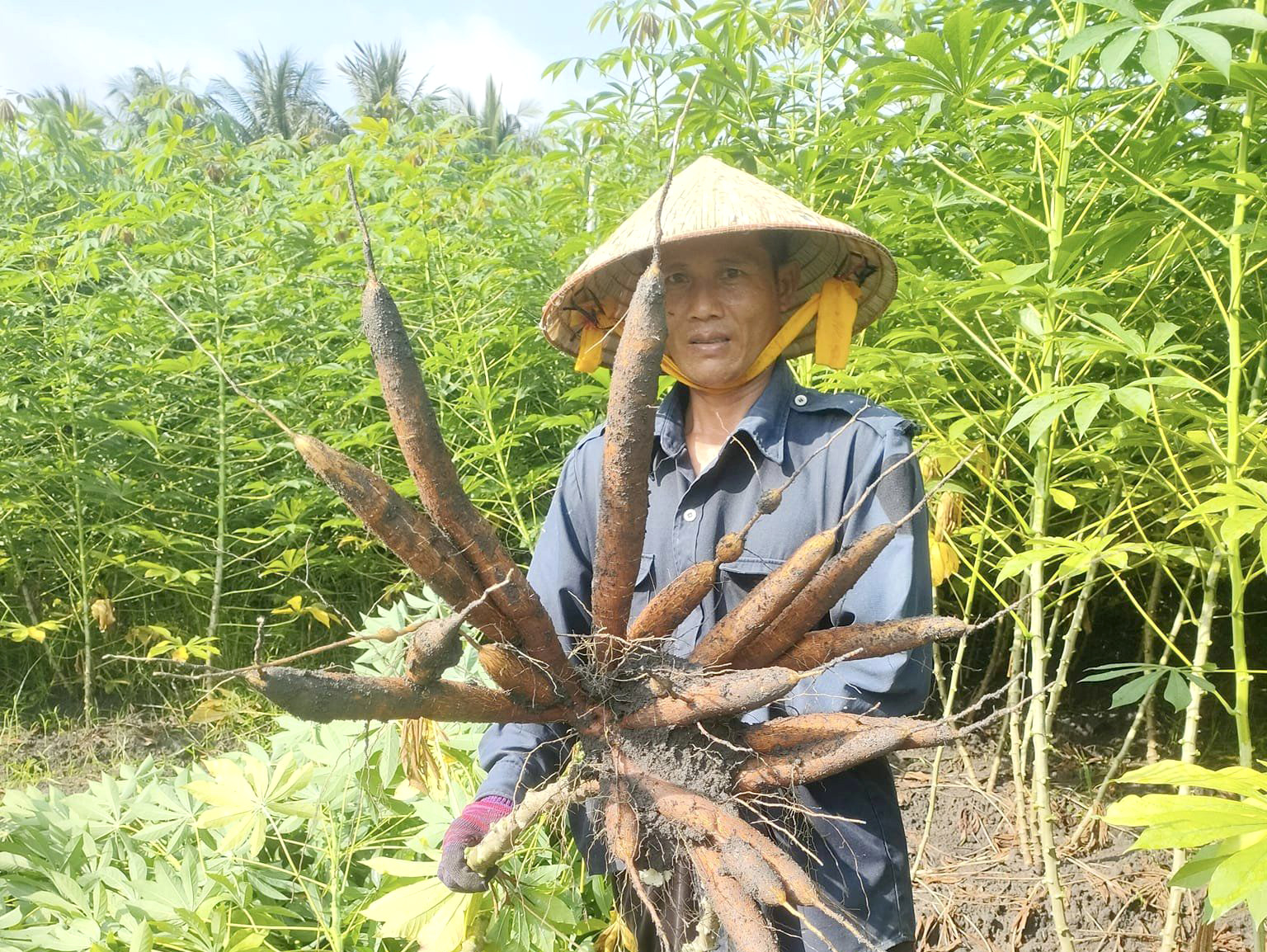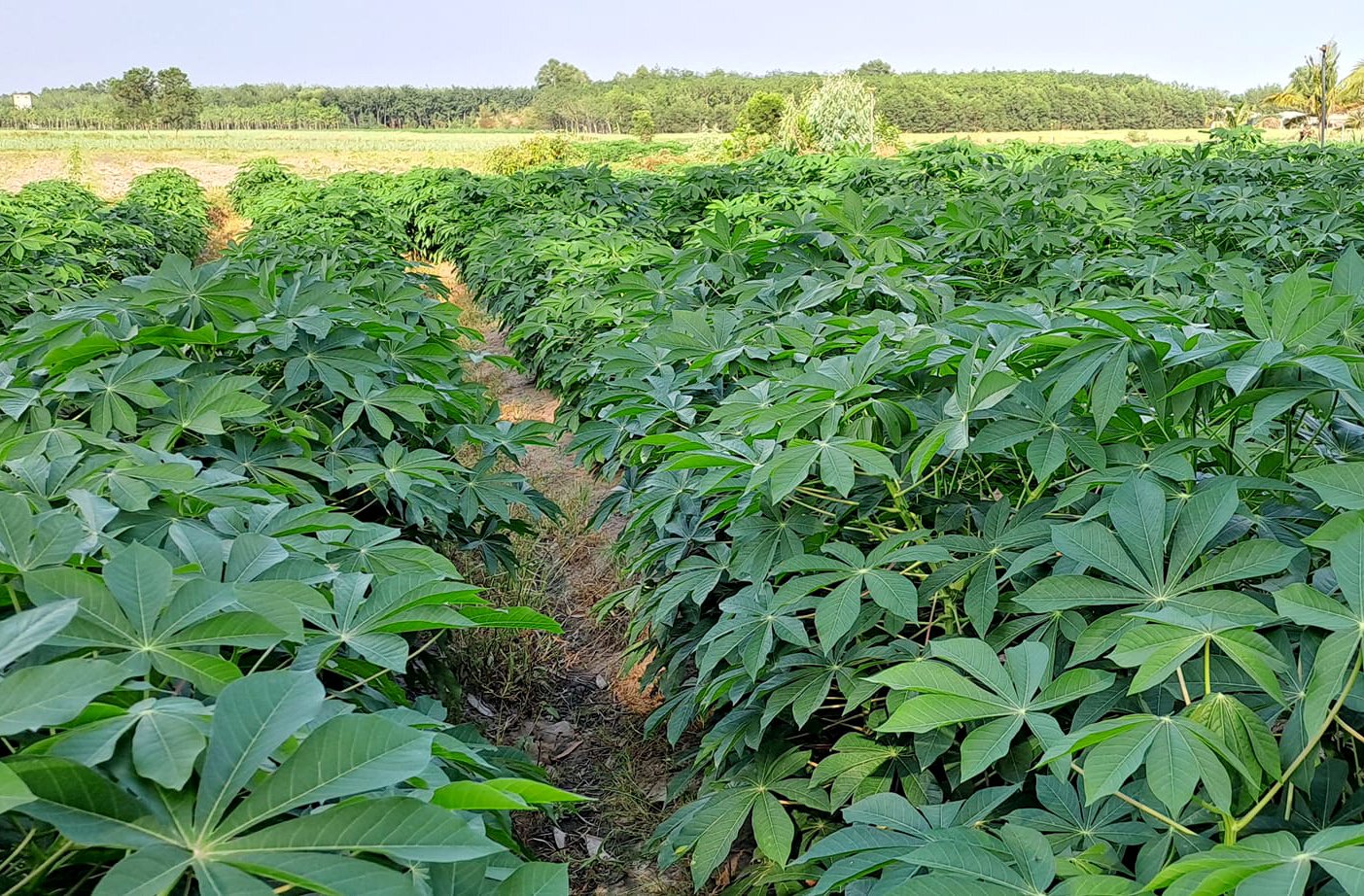November 22, 2025 | 07:46 GMT +7
November 22, 2025 | 07:46 GMT +7
Hotline: 0913.378.918
November 22, 2025 | 07:46 GMT +7
Hotline: 0913.378.918

Farmers harvesting cassava in Tay Ninh province. Photo: Son Trang.
Vietnam's cassava exports have decreased significantly in both volume and turnover in the first half of 2023. According to the General Department of Customs, the value of Vietnamese cassava and cassava product exports reached 1.5 million tons in the first six months of 2023, which is valued at 594 million USD. This is a decrease of 13.4% in volume and 21.2% in value compared to that of the same period in 2022.
China, the target export market for Vietnamese cassava, has reduced its imports since the beginning of 2023. This reduction has caused a decline in the volume and value of Vietnamese cassava exports. According to the General Administration of Customs of China, the volume of cassava chips imported into the Chinese market decreased by 5.1% in the first five months of the year. On the other hand, the volume of imported tapioca starch decreased by 32.4%.
Despite their extensive reach to various markets around the world, Vietnamese cassava and cassava products are primarily exported to China. Consequently, the reduction in China's imports of cassava chips and tapioca starch has greatly affected Vietnam's cassava exports. According to the General Department of Vietnam Customs, Vietnam's cassava and cassava product exports to the Chinese market only reached 1.3 million tons within the first six months of 2023, which is valued at 523 million USD. This is a decrease of 15.1% in volume and 23.9% in value.
The export of cassava and cassava products to markets such as Taiwan, Japan, Malaysia, etc. increased markedly in terms of volume and value compared to that of the same period in 2022. However, due to China's overwhelming market share and the fact that the aforementioned markets only account for a small proportion of Vietnam's cassava industry, the total cassava and cassava product exports declined drastically compared to the same period in 2022.
Regarding the export of cassava and cassava products in the second half of 2023, the Import-Export Department under the Ministry of Industry and Trade forecasts that China's demand for cassava and tapioca starch will rapidly recover in the immediate future as this country prepares for the moon cake production season from the beginning of the sixth lunar month.
On the other hand, Vietnam's cassava industry is aiming for an export value of over 2 billion USD in the long term. The Vietnam Cassava Association held its third congress for the 2023-2028 period at the end of June in Tay Ninh province. Subsequently, the Vietnam Cassava Association has set a target export value of 2 billion USD per year by 2028, with the aim of raising this figure to 2.5 billion USD per year by 2050.
The cassava industry has identified three key problems to be solved immediately in order to achieve these figures. Namely: the export of cassava is too dependent on a single market; the processing technology is outdated, resulting in limited deep-processed products; the stark imbalance between cassava processing and raw cassava production areas.

A cassava field in Tay Ninh province. Photo: Son Trang.
The Vietnam Cassava Association has set out detailed directions and solutions to address these challenges. Namely: maintain the cassava area at 500,000 to 520,000 hectares per year nationwide; limit unfair purchasing competition that can cause widespread damage to the domestic cassava industry; perform disease control on cassava; invest in expanding the application of advanced processing technology with the aim of raising the deep processing rate from 6.7% to 15%; expand and diversify markets.
According to Mr. Nghiem Minh Tien, Chairman of the Vietnam Cassava Association, Vietnam's cassava industry has grown considerably within the last ten years. Vietnam currently has approximately 530,000 hectares of annual cassava production area with an output of at least 10 million tons of fresh cassava per year.
Tay Ninh is the province with the largest cassava production area in Southeastern Vietnam. Mr. Nguyen Dinh Xuan, Director of Tay Ninh Department of Agriculture and Rural Development, reported that the province's cassava production area has continuously grown throughout the years. By the end of 2022, Tay Ninh had nearly 62,000 hectares of cassava production area with an average output of more than 32 tons per hectare. Tay Ninh province currently has 65 cassava starch processing facilities with a total capacity of 4 million tons of cassava per year.
Translated by Nguyen Hai Long
/2025/11/21/4309-2-153400_128.jpg)
(VAN) Green and low-emission rice is paving the way for Vietnamese rice to enter high-end markets, marking the beginning of a transformation journey toward greening and elevating the national rice brand.

(VAN) ‘Right to Win’ outlines a national action plan that shapes a new vision for Viet Nam’s agriculture in an era of renewal and global integration.

(VAN) Lam Dong’s farmed sturgeon output this year is expected to reach 2,300 tons, worth VND 450 billion, affirming the brand’s position on the market.

(VAN) A surge in Ukrainian egg exports, largely driven by soaring sales to the UK over the last few years, has notably pushed up egg prices on the domestic market.

(VAN) The price of Arabica Catimor coffee in Quang Tri is currently at VND 25,000–27,000/kg (fresh cherries), the highest level ever recorded

(VAN) 'From the coffee story, we can think deeper and further about the crop production sector - from development orientations and value-chain organization to international integration,' assessed Dr Le Quoc Doanh.
/2025/11/18/2431-0-161627_248.jpg)
(VAN) Viet Nam accounts for 43% of the world's export volume of Robusta coffee. However, the Vietnamese Robusta coffee brand has yet to gain broad recognition on the global market.